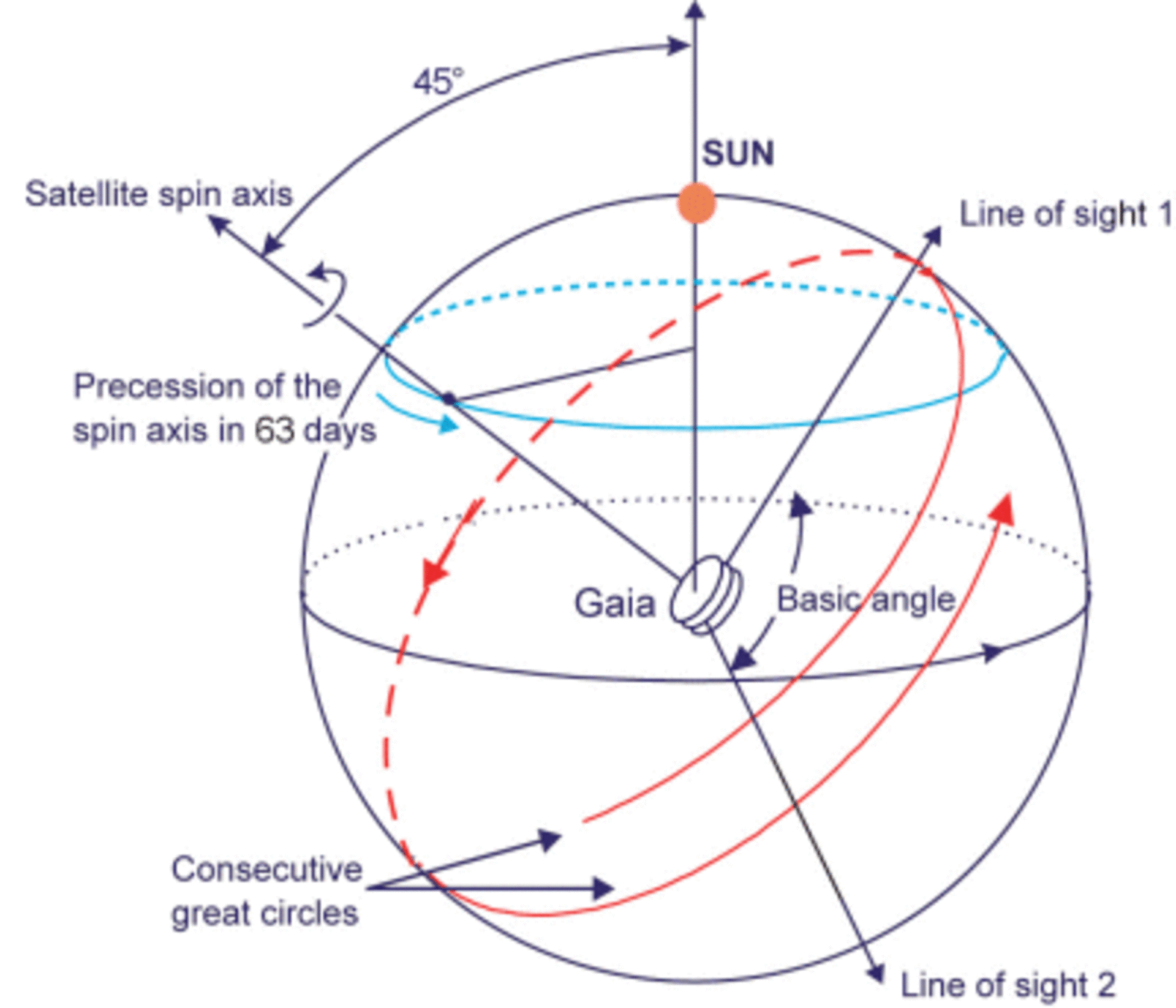Spinning in space
Gaia’s mission relies on the systematic and repeating observation of star positions in two fields of view. As the detectors repeatedly measure the position of each celestial object, they will detect any changes in the object’s motion through space.
To achieve its mission the spacecraft is spinning slowly, sweeping its two telescopes across the entire celestial sphere to make four complete rotations per day.
Gaia’s telescopes point at two different portions of the sky, separated by a constant 106.5°. Therefore, objects arrive in the second field of view 106.5 minutes after they are observed in the first.
Meanwhile its spin axis precesses around the Sun with a period of about 63 days, allowing different parts of the sky to be scanned. This scanning strategy builds up an interlocking grid of positions, providing absolute – rather than relative – values of the stellar positions and motions.
The spacecraft spin axis makes an angle of 45° with the Sun direction, ensuring that the payload is shaded from the Sun, but that the solar arrays can still produce electricity efficiently.


